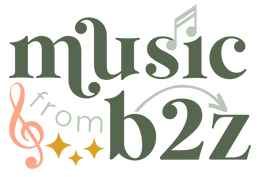Hey, y'all! Over the next few weeks, I'm going to be doing a series about using small group instruction in the music classroom. I get questions about how I run these activities and stations all the time, so I thought I would share!
Why do I use small groups?
I'm a big believer in the "work smarter, not harder" philosophy.
My first year of teaching, I did everything in my classroom whole group. No seriously...EVERYTHING. I went home absolutely exhausted every day feeling like the only thing I accomplished was talking. There were very little behavior issues at that school, so whole group instruction worked.
Fast forward to today. My current school has a very challenging demographic (behavior issues, difficult home lives, etc.). Teaching whole group to my current students for the entire class simply does not work. Enter: Small Groups/Stations.

How do I structure my lessons?
Every lesson (with the exception of PreK and sometimes K), starts with a 10ish minute lesson from me. Depending on the topic, we'll watch a short video, play a game, do some rhythm exercise, etc. No mater what it is, my portion of the teaching only lasts about 10 minutes...15 at the most. This is the key. The longer I talk, the less attention I get from my students.
After my short mini-lesson, I move into small groups and/or stations. This time can encompass a lot of things. Sometimes, we do true stations where we rotate through a set of activities. Other times, we all work on the same activity, just in small groups. (More on this in Part 3 of the series.)

Small Group Expectations
Starting as early as Kindergarten, I teach small group expectations. This is essential for me because year after year, they are able to do small groups without any further instruction.
My expectations are pretty standard. (Level 1-2 voice, clean up your area before leaving, use materials appropriately, etc.) We practice and practice these expectations in the second semester of Kindergarten so they know the routine. Of course, there will be some reteaching in First Grade, just like anything else. My goal is that they are able to do these kinds of activities even when I am not in the room. Last week, I had to step out of the classroom for a few minutes and an assistant came to watch my class. When I returned from the office, she raved about how well they were working...working, not socializing. This level of work from my students allows me to move around the classroom and focus on individual assessment. (More coming in Part 5.)
I can't wait to tell you more about this topic in my upcoming posts. Make sure you subscribe to my email list to be the first to know about new posts! Have questions or comments? Leave them in the comments below or send me a DM on Instagram.
Next in the Series:
- Part 2: Flexible Seating and Small Groups
- Part 3: Stations Do Not (Have to) Equal Rotations
- Part 4: "Free Choice" Stations
- Part 5: Engagement and Individual Assessment

